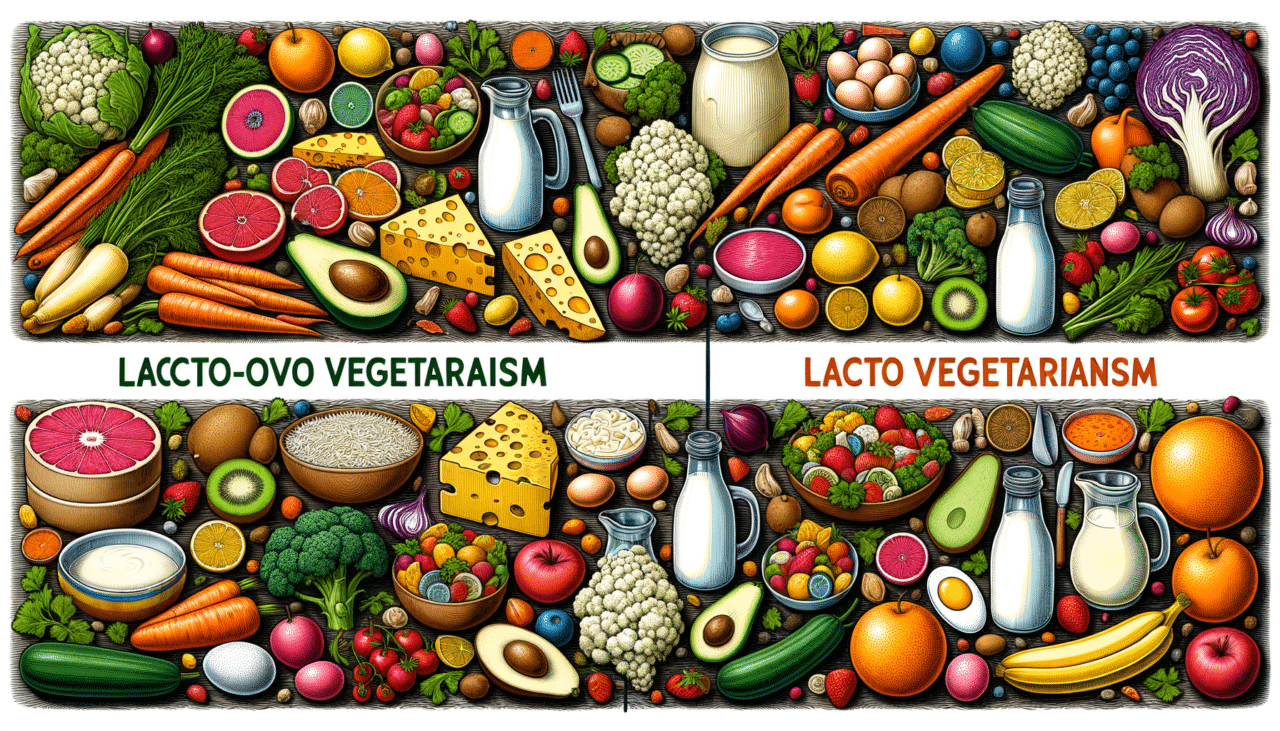In the ever-evolving world of dietary preferences, vegetarianism stands out as a popular choice for many seeking healthier, ethical, and environmentally friendly lifestyles. Among the various types of vegetarian diets, Lacto-Ovo Vegetarianism and Lacto Vegetarianism are two prominent options. While both share common ground, they also have distinct characteristics that might make one more appealing to certain individuals. In this guide, we’ll delve into the specifics of each diet, compare their main points, and help you decide which might be the best fit for you.
Understanding Lacto-Ovo Vegetarianism
Characteristics:
- Inclusion of Dairy and Eggs: Lacto-Ovo vegetarians consume both dairy products and eggs, in addition to plant-based foods.
- Exclusion of Meat and Fish: Like all vegetarians, Lacto-Ovo vegetarians do not consume meat, poultry, or fish.
- Nutritional Balance: This diet offers a good balance of proteins, vitamins, and minerals due to the inclusion of eggs and dairy.
- Flexibility: Offers more flexibility in meal planning and dining options compared to stricter vegetarian diets.
- Popular Choice: It is one of the most common forms of vegetarianism, making it easier to find recipes and dining options.
Understanding Lacto Vegetarianism
Characteristics:
- Inclusion of Dairy: Lacto vegetarians consume dairy products but exclude eggs, along with meat and fish.
- Focus on Plant-Based Foods: This diet emphasizes a higher intake of plant-based foods, supplemented by dairy.
- Ethical Considerations: Many choose this diet for ethical reasons, avoiding eggs due to concerns about animal welfare.
- Nutritional Considerations: While dairy provides calcium and certain vitamins, the exclusion of eggs requires careful planning to ensure adequate protein intake.
- Regional Popularity: Common in regions where dairy farming is prevalent, offering a cultural and dietary fit for many.
Comparative Table: Lacto-Ovo Vegetarianism vs. Lacto Vegetarianism
| Feature | Lacto-Ovo Vegetarianism | Lacto Vegetarianism |
|---|---|---|
| Dairy Consumption | Yes | Yes |
| Egg Consumption | Yes | No |
| Meat and Fish | No | No |
| Protein Sources | Eggs, dairy, plant-based | Dairy, plant-based |
| Nutritional Balance | Typically higher in protein and B vitamins due to egg inclusion | Requires careful planning to meet protein needs |
| Ethical Considerations | May be less strict on animal welfare compared to Lacto | Often chosen for ethical reasons regarding egg production |
| Cultural Fit | Widely accepted globally | More common in dairy-centric cultures |
| Dietary Flexibility | More flexibility in recipes and dining options | Limited by exclusion of eggs |
| Popularity | One of the most common vegetarian diets | Popular in specific regions and cultures |
Conclusion
Choosing between Lacto-Ovo Vegetarianism and Lacto Vegetarianism largely depends on personal preferences, ethical considerations, and nutritional needs. Lacto-Ovo Vegetarianism offers greater flexibility and a wider range of protein sources, making it a suitable choice for those new to vegetarianism or seeking a balanced diet. On the other hand, Lacto Vegetarianism can be ideal for individuals focusing on ethical concerns related to egg production or those who prefer a diet more centered around dairy and plant-based foods.
Both diets provide numerous health benefits, including reduced risk of chronic diseases and improved digestive health. However, it’s crucial to plan meals carefully to ensure nutritional adequacy, particularly in terms of protein, calcium, and vitamins.
Whether you choose Lacto-Ovo Vegetarianism or Lacto Vegetarianism, both paths offer a rewarding journey towards a healthier and more sustainable lifestyle.

Comments (0)
There are no comments here yet, you can be the first!